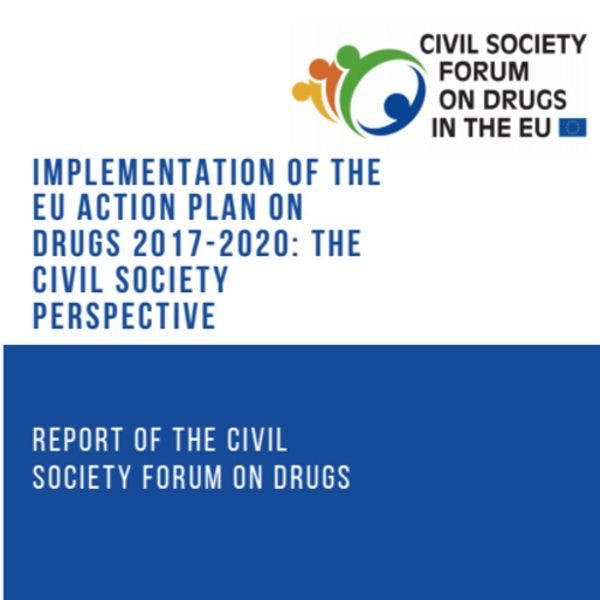Mise en œuvre du Plan d'action sur les drogues de l'UE 2017-2020 : Perspectives de la société civile
Iga Jeziorska note des progrès dans la gamme et la qualité des services, tout en soulignant les disparités dramatiques en matière d'accès. Pour en savoir plus, en anglais, veuillez lire les informations ci-dessous.
By Iga Jeziorska (YODA) / Correlation – European Harm Reduction Network - On behalf of the Civil Society Forum on Drugs
The report is part of the WP2 of the European Civil Society Forum Project II, supporting the activities of the Working Group 1 of the CSFD. The WP2 is coordinated by YODA with the collaboration of Forum Droghe.
This report is produced on behalf of the Civil Society Forum on Drugs (CSFD), an expert group of the European Commission, created in 2007 based on the Commission Green Paper on the role of civil society in drugs policy in the EU. The Forum’s membership consists of approximately 45 civil society organizations from across Europe. CSFD members represent a broad range of areas withing drug policy field and diverse approaches to addressing drug use and drug policy. The primary aim of the Forum is to provide a platform for a structured dialogue between the European Commission and civil society which supports drug policy formulation and implementation through practical advice.
One of the CSFD’s focus areas is the European drug policy. Over the years, a dedicated Working Group on the EU Drug Policy has been contributing to the promotion of effective, evidence-informed, and human rights-based policies through providing recommendations for the European Commission and through reporting on the drug policy situation in Europe. This report is a continuation of the CSFD’s efforts to assess the implementation of the EU Action Plan 2017-2020 and builds on a similar study published by the CSFD in 2018, providing new information, complementing, and deepening the previous analysis.
The EU Drug Strategy provides an ‘overarching political framework and priorities for EU drugs policy identified by Member States and EU institutions’ (European Council, 2012). The Strategy is strongly embedded in the values of the EU as well as in international agreements. It is complemented by Action Plans on Drugs, which – building on the general framework provided by the Strategy – enlist and describe specific actions to be implemented, along with responsible actors and monitoring indicators.
The EU Drug Strategy and Action Plans require a relative consensus among the Member States regarding the content of the document. However, there is no legal obligation for the Member States to adhere to these documents while formulating national drug policies. The EU drug policy documents are merely recommendations. hence, the national-level policies in the 10 Member States and Candidate States reflect them to a varying extent, creating a mosaic of diverse responses to drug use.
To assess the extent of the implementation of the EU Action Plan on Drugs 2017-2020, the CSFD surveyed civil society experts for the first time in 2018, at the very beginning of the Action Plan implementation period. Focusing on the demand and harm reduction parts of the Action Plan, the present analysis aims to provide information on the civil society’s perceptions of the availability and quality of thirteen key services in 2021, as well as account for the possible changes that took place over the period 2018-2021. Like the previous assessment, we also explore the accessibility of several services among selected vulnerable populations. The novelty of the present study compared to the earlier one lies in the inclusion of qualitative data to provide a more in-depth information on how services function in selected countries. Besides the main explorative ambition, this study also aims to contribute to further improvement of drug policymaking practice, highlighting the shortcomings existing in the field.
Téléchargements
Sujets
Profils associés
- Civil Society Forum on Drugs (CSFD)
